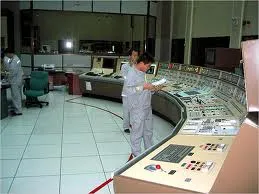
L-3 MAPPS deploys simulators for Hongyanhe nuclear training center
A second pair of L-3 MAPPS-developed simulators for the CPR1000+ nuclear plant design have entered service at the Hongyanhe Nuclear Power Training Center.
The first of the two simulators, which was developed for units 3 and 4, was handed over to Liaoning Hongyanhe Nuclear Power Co. in November 2010, and the other, for units 1 and 2, in March 2011. After extensive testing, the simulators were deployed to allow operator training to proceed. Several updates to the simulators are still to follow as updated digital control system information is made available to L-3 MAPPS.
“The successfully launched Hongyanhe simulators are the latest examples of L-3’s progressive simulation technology and techniques,” said Michael Chatlani, vice president of marketing and sales for L-3 MAPPS Power Systems and Simulation. “We stand ready to support the continued growth and success of the Chinese nuclear power industry with our state-of-the-art simulation solutions for operational excellence and safety.”
The Hongyanhe simulators take advantage of process models developed and maintained within L-3 MAPPS’ Orchid® simulation environment. The plant’s non-safety control sequences, developed by China Techenergy, have been translated by L-3 MAPPS and are also available in Orchid for quick modification, visualisation and validation of the control design by LHNP.
The simulators support all major training requirements and are available for LHNP to prepare operators well before first fuel loading of Hongyanhe unit 1, which is targeted for early 2012. The simulators have been tested for normal operations – from cold shutdown to 100% full power and from 100% full power to hot, intermediate and cold shutdown, as well as for mid-loop operations and core performance. In addition, numerous transient tests have been successfully demonstrated, including loss of coolant accidents, steam line breaks, loss of feedwater, reactor and turbine trips, load rejections, steam generator tube ruptures, and more.
The Hongyanhe project is the first to be built in northeast China as part of the country’s plans to upgrade its aging industrial base and will be operated by LHNP. The new Hongyanhe Nuclear Power Plant site, located in Hongyanhe Town of Wafangdian, 104km north of Dalian City in Liaoning Province, will have six generating units, each featuring China’s standard CPR1000+ design, and a 1,085MW three-loop pressurised water reactor, whose design is being coordinated by China Nuclear Power Engineering Company. The Hongyanhe plant units are the first in a series of CPR1000+ units that utilise Mitsubishi Electric’s MELTAC safety digital control system and the CTEC-supplied HOLLiAS non-safety DCS. The Hongyanhe plant serves as a reference for other plants already under construction, namely the Ningde, Yangjiang and Fangchenggang Nuclear Power Stations.











 Advertise
Advertise











